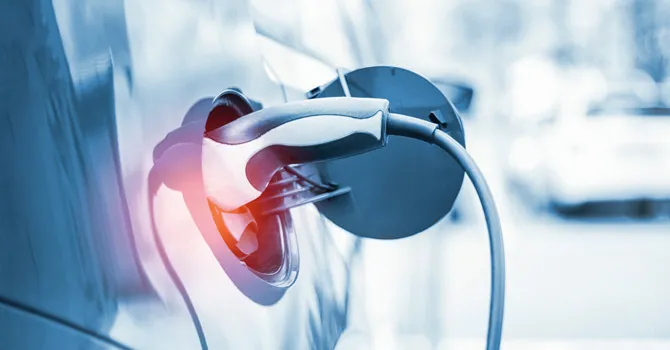Electric cars are in high demand in the European automotive market, leading to a stronger demand surrounding recharging infrastructure. Our recent study on charging station preferences and purchasing behavior shows that drivers of electric cars see benefits of home charging stations, but still don’t have a clear overview of this new market. In this article we take a closer look at customers’ brand perception, their preferred sales channels, and value drivers behind purchasing home-charging stations.
Despite the significant uptake of electric cars in Europe, drivers face a lack of charging options in their daily environment. Home-charging stations are becoming an attractive alternative, offering electric vehicle owners flexibility and cost savings. However, our recent study reveals that consumer knowledge of manufacturers and products remains very limited. We identified four key areas that influence customer perception and impact the decision to purchase:
1. Overview of the market
New players are continuing to enter a fragmented market, made up of established brands from various traditional industries, such as electricity, automotive, and electronic devices. This leads to a lack of overall market transparency and results in customer confusion. In Germany for example, less than half of the respondents could name one single brand for home-charging stations. Only ten percent were able to name more than one brand. Even established automotive suppliers, like Webasto, that are well known for products such as their heating solutions are only known by few charging station customers. When asked about the expected performance, consumers tend to rate existing brands from adjacent categories higher, but only by a small margin. This shows that they are still unsure about brand performance in this developing segment and transfer their brand knowledge, experiences, and trust from other product categories to the charging market. This is a joint risk and opportunity for market players. They still have time to form the market opinion about their brand but will lose out if they don’t.
2. Sales channels
Given the diverse and hyper-local installation-requirements of the product in question, the sales channel structure for home-charging stations is inherently complex. There are multiple levels and players, such as online wholesalers, dealers, installation providers and energy providers, just to name a few. This translates into complicated purchase processes where the payer, decision-maker, and end-user may all be different people. This drives complexity in both product design (i.e. different value drivers for different channel players) and channel management (i.e. management of price positioning and trade terms). In addition, the current market environment and the high need for customer education lead to a heavy need for advice at the point of sale. This will be particularly vital in early market phases and we already see differences across our surveyed European countries. In Germany, one in two owners of charging stations changed their opinion about buying a particular home-charging station after having received a recommendation or advice. In Norway and the Netherlands, where the introduction of electric vehicles and the infrastructure are much more advanced, only one third of owners were influenced in this way. With growing consumer knowledge and product maturity, online channels will also become more important. Our survey shows that customers are generally open to online offers in the future, but many customers still prefer to buy through offline channels.
Our recommendation: Players need to develop a robust multi-channel strategy that manages and incentivizes multiple players, ensuring the different needs and preferences of these players are met while properly educating them about the product and its features. Here strategic partnerships can be a useful tool. Moreover, prices and products must be fenced across channels to protect profit and prevent channel conflicts.
3. Value drivers
The developing nature of the home-charging market means most consumers have little to no experience regarding the usage of home-charging stations. Therefore, their understanding of the key product requirements and their personal value drivers is not yet fully developed. Our survey shows that charging capacity was identified by participants as the most important product value driver before cable characteristics. This is a common picture: Consumers often simplify their purchase decision through simplistic numeric value drivers that are easy to digest and compare between product offerings. Think horsepower for cars.
Yet, despite the limited understanding of the new product, drivers of electric vehicles do see benefits in owning a home-charging station, including increased flexibility and a lower cost of charging compared to public charging stations. On top, the majority of customers also value the ability to connect to a charging station and are willing to pay for it. Options to connect to energy management systems in the home and to operate and monitor the charging system remotely were considered valuable features by the survey participants. As smart home appliances become more popular, the number of possibilities of interacting with the personal charging station will increase. Therefore, the importance of connectivity features will further rise. Governmental stimuli like in Germany, where certain connectivity functions are now condition for subsidies for charging stations, will speed up this development.
Our recommendation: Purchase decisions for home-charging stations are facilitated when consumers have an overview of easy to understand criteria. For example, previously in the automotive industry customers were not immediately convinced of vehicle features like head-up display or heated wire windshields, considering them a distraction rather than a benefit. However, once customers were able to experience these features in action, e.g. via a showroom demonstration, they were able to recognize the added value. Market players for home-charging stations will need to understand and educate customers as well as carefully forecast and monitor the development of product value drivers in a maturing market while configuring their portfolio accordingly.








